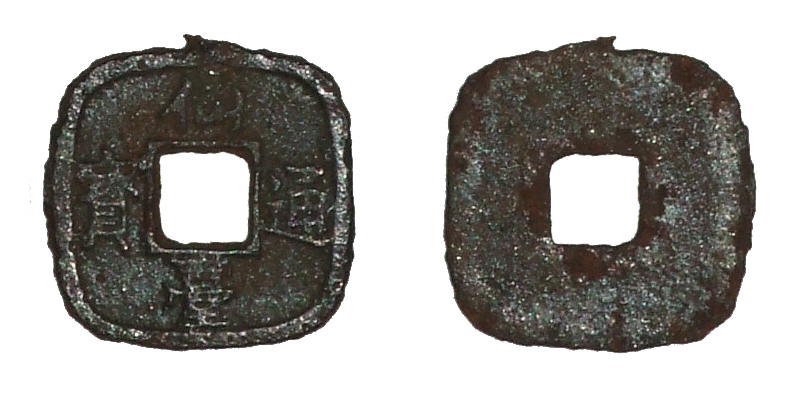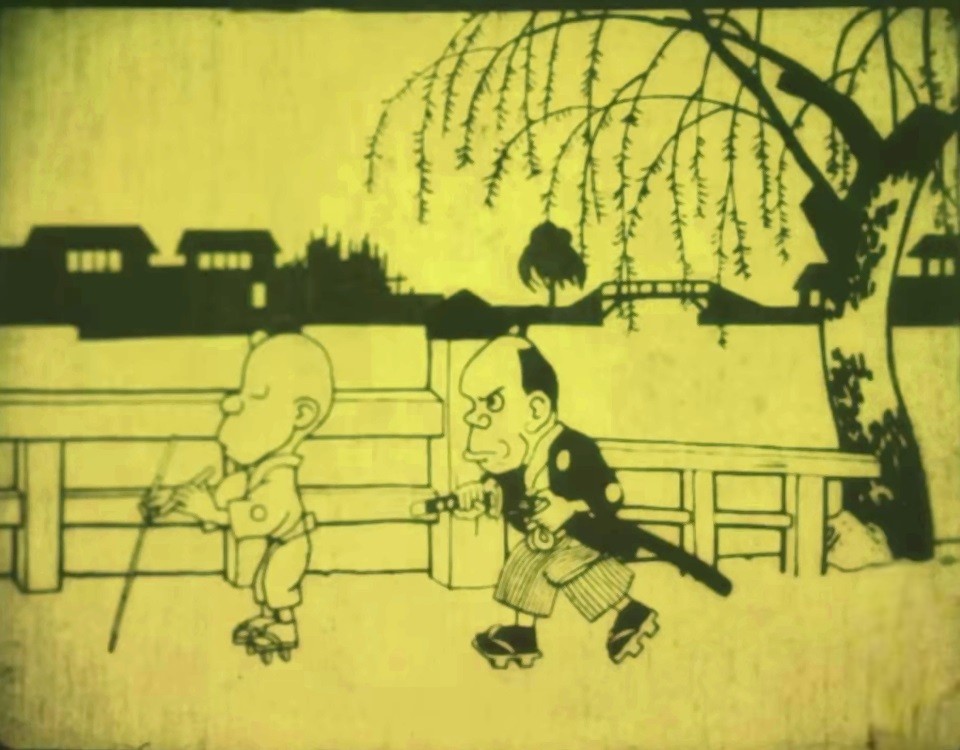|
Kameoka Hachimangū
is a Shinto shrine in Aoba-ku, Sendai, Miyagi, Japan. It is the tutelary shrine of the Date clan. History Kameoka Hachimangū was founded in 1190 as a branch of Tsurugaoka Hachimangū by Date Tomomune, the Date clan founder, at Takako, in the former town of Hobara, now a part of modern Date City in Fukushima Prefecture."Kameoka Hachimangū," on Miyagi Shrine Office's website accessed 3 Nov. 2017 The 1719 text Ōū Kanseki Monrōshi , however, claims that the shrine was founded by Tomomune's son, Date Munemura. A legend in the Date clan holds that a mythical black turtle, one of the [...More Info...] [...Related Items...] OR: [Wikipedia] [Google] [Baidu] |
Date Clan
The is a Japanese samurai kin group. Papinot, Jacques Edmond Joseph. (1906). ''Dictionnaire d’histoire et de géographie du Japon''; Papinot, (2003)"Date", ''Nobiliare du Japon'', p. 5 retrieved 2013-5-5. History The Date family was founded in the early Kamakura period (1185–1333) by Isa Tomomune who originally came from the Isa district of Hitachi Province (now Ibaraki Prefecture), and was a descendant of Fujiwara no Uona (721–783) in the sixteenth generation. The family took its name from the Date district (now Date City in Fukushima Prefecture) of Mutsu Province which had been awarded in 1189 to Isa Tomomune by Minamoto no Yoritomo, the first Kamakura shōgun, for his assistance in the Genpei War and in Minamoto no Yoritomo's struggle for power with his brother, Minamoto no Yoshitsune. During the Nanboku-chō Wars in the 1330s, the Date supported the Imperial Southern Court of Emperor Go-Daigo through Kitabatake Akiie, who had been appointed Commander in Ch ... [...More Info...] [...Related Items...] OR: [Wikipedia] [Google] [Baidu] |
Sendai Domain
The , also known as the , was a domain of the Tokugawa Shogunate of Japan during the Edo period from 1600 to 1871. The Sendai Domain was based at Aoba Castle in Mutsu Province, in the modern city of Sendai, located in the Tōhoku region of the island of Honshu. The Sendai Domain was ruled for its existence by the '' tozama'' ''daimyō'' of the Date, and under the ''kokudaka'' system its income rating at 625,000 '' koku'' was the third-largest domain in Japan after the Satsuma Domain and Kaga Domain. The Sendai Domain was geographically the largest domain in northern Japan with its mostly- contiguous holdings covering most of southern Mutsu Province, including all of present-day Miyagi Prefecture, parts of southern Iwate Prefecture and northeastern Fukushima Prefecture. The Sendai Domain was the focal member of the Ōuetsu Reppan Dōmei against the Meiji Restoration during the Boshin War. The Sendai Domain was dissolved in the abolition of the han system in 1871 by the Meij ... [...More Info...] [...Related Items...] OR: [Wikipedia] [Google] [Baidu] |
1190s Establishments In Japan , a hypothetical chemical element with atomic number 119
*
{{Number disambiguation ...
119 may refer to: * 119 (number), a natural number * 119 (emergency telephone number) * AD 119, a year in the 2nd century AD * 119 BC, a year in the 2nd century BC * 119 (album), 2012 * 119 (NCT song) *119 (Show Me the Money song) * 119 (film), a Japanese film, see Naoto Takenaka#Film * 119 (MBTA bus) * List of highways numbered 119 See also * 11/9 (other) * 911 (other) * Ununennium Ununennium, also known as eka-francium or element 119, is the hypothetical chemical element with symbol Uue and atomic number 119. ''Ununennium'' and ''Uue'' are the temporary systematic IUPAC name and symbol respectively, which are used until th ... [...More Info...] [...Related Items...] OR: [Wikipedia] [Google] [Baidu] |
Buildings And Structures In Sendai
A building, or edifice, is an enclosed structure with a roof and walls standing more or less permanently in one place, such as a house or factory (although there's also portable buildings). Buildings come in a variety of sizes, shapes, and functions, and have been adapted throughout history for a wide number of factors, from building materials available, to weather conditions, land prices, ground conditions, specific uses, prestige, and aesthetic reasons. To better understand the term ''building'' compare the list of nonbuilding structures. Buildings serve several societal needs – primarily as shelter from weather, security, living space, privacy, to store belongings, and to comfortably live and work. A building as a shelter represents a physical division of the human habitat (a place of comfort and safety) and the ''outside'' (a place that at times may be harsh and harmful). Ever since the first cave paintings, buildings have also become objects or canvasses of much artist ... [...More Info...] [...Related Items...] OR: [Wikipedia] [Google] [Baidu] |
Date Masamune
was a regional ruler of Japan's Azuchi–Momoyama period through early Edo period. Heir to a long line of powerful ''daimyō'' in the Tōhoku region, he went on to found the modern-day city of Sendai. An outstanding tactician, he was made all the more iconic for his missing eye, as Masamune was often called ''dokuganryū'' (独眼竜), or the "One-Eyed Dragon of Ōshu". As a legendary warrior and leader, Masamune is a character in a number of Japanese period dramas. Early life and rise Date Masamune was born as Bontenmaru (梵天丸) later Tojiro (藤次郎) the eldest son of Date Terumune, born in Yonezawa Castle (in modern Yamagata Prefecture). At the age of 14 in 1581, Masamune led his first campaign, helping his father fight the Sōma clan. In 1584, at the age of 17, Masamune succeeded his father, Terumune, who chose to retire from his position as ''daimyō''. Masamune's army was recognized by its black armor and golden headgear. Masamune is known for a few things ... [...More Info...] [...Related Items...] OR: [Wikipedia] [Google] [Baidu] |
Gaina (company)
, formerly known as , is a Japanese animation studio subsidiary of the Kinoshita Group. Establishment In 2015, Gainax established a new managing company to manage a studio and museum on Miharu, Fukushima to take overseas outsourcing works and manage the museum. The objective and location was made to help the tourism on the region because of the Fukushima Daiichi nuclear disaster in 2011. In December 2015, Fukushima Gainax and Gainax became independent companies with no relation between each other besides the Gainax name, with the company entering their own projects later. In September 2016, the company established a new subsidiary in Tokyo. In August 2018, the company relocated its headquarters to its subsidiary in Tokyo making it the main company while transferring control to the museum in Fukushima to its new company called Fukushima Gaina the same month. On August 20, it was announced that the Kinoshita Group acquired the company and that the company changed its name to G ... [...More Info...] [...Related Items...] OR: [Wikipedia] [Google] [Baidu] |
Anime
is hand-drawn and computer-generated animation originating from Japan. Outside of Japan and in English, ''anime'' refers specifically to animation produced in Japan. However, in Japan and in Japanese, (a term derived from a shortening of the English word ''animation'') describes all animated works, regardless of style or origin. Animation produced outside of Japan with similar style to Japanese animation is commonly referred to as anime-influenced animation. The earliest commercial Japanese animations date to 1917. A characteristic art style emerged in the 1960s with the works of cartoonist Osamu Tezuka and spread in following decades, developing a large domestic audience. Anime is distributed theatrically, through television broadcasts, directly to home media, and over the Internet. In addition to original works, anime are often adaptations of Japanese comics (manga), light novels, or video games. It is classified into numerous genres targeting various broad and nic ... [...More Info...] [...Related Items...] OR: [Wikipedia] [Google] [Baidu] |
Important Cultural Property (Japan)
An The term is often shortened into just is an item officially classified as Tangible Cultural Property by the Japanese government's Agency for Cultural Affairs ( Ministry of Education, Culture, Sports, Science and Technology) and judged to be of particular importance to the history, arts, and culture of the Japanese people. Classification of Cultural Properties To protect the cultural heritage of Japan, the Law for the Protection of Cultural Properties was created as a under which important items are appropriated as Cultural Properties,In this article, capitals indicate an official designation as opposed to a simple, unofficial definition, e.g "Cultural Properties" as opposed to "cultural properties". thus imposing restrictions to their alteration, repair and export. Besides the "designation system", there exists a , which guarantees a lower level of protection and support to Registered Cultural Properties. Cultural Properties are classified according to their nature. Items ... [...More Info...] [...Related Items...] OR: [Wikipedia] [Google] [Baidu] |
Bombing Of Sendai During World War II
The on July 10, 1945, was part of the strategic bombing campaign waged by the United States against the civilian population and military targets during the Japan home islands campaign in the closing stages of World War II. Background The city of Sendai was the largest population and commercial center of the Tohoku region of northern Honshu island, but lacked specific targets of strategic military significance. The Tōhoku Main Line railway connecting Tokyo with Aomori also ran through the city. The industrial city of Kamaishi was bombed on July 14, 1945, which was also the first air raid experienced in Miyagi Prefecture during the war. The first experience of Sendai with bombing was on March 10, 1945, when three B-29 Superfortress bombers from the Tokyo Air Raid dropped their bomb load on Mount Zaō for unknown reasons, killing 34 civilians, and an additional two B-29 bombers attacked Sendai Airport causing minor damage. On May 25, 1945, a photo-reconnaissance B-29 overflew Se ... [...More Info...] [...Related Items...] OR: [Wikipedia] [Google] [Baidu] |
Sendai Tōshōgū
is the memorial shrine of Tokugawa Ieyasu in Sendai, Miyagi Prefecture, Japan. Five of its buildings, all dating to 1654, have been designated Important Cultural Properties. The torii and gates were damaged in the 2011 Tōhoku earthquake and tsunami. History The Sendai Tōshōgū was established by Date Tadamune, the second ''daimyō'' of Sendai Domain. Construction began in August 1649, and was completed in March 1654. The shrine served as the tutelary temple of the Date clan during the Edo period. However, with the fall of the Tokugawa shogunate in 1868, the new Meiji government initially closed the shrine. It was soon re-opened due to demands of local townspeople, and under the State Shinto system of shrine ranking from 1879 through 1916, was officially designated as a "county shrine" and from 1916 to 1946 as a "prefectural shrine". Notable structures * (1654) ( Important Cultural Property) * (1654) (ICP) * (1654) (ICP) * (1654) (ICP) * (1654) (ICP) File:Sendai Tōs ... [...More Info...] [...Related Items...] OR: [Wikipedia] [Google] [Baidu] |
Oku No Hosomichi
''Oku no Hosomichi'' (, originally ), translated as ''The Narrow Road to the Deep North'' and ''The Narrow Road to the Interior'', is a major work of '' haibun'' by the Japanese poet Matsuo Bashō, considered one of the major texts of Japanese literature of the Edo period. The first edition was published posthumously in 1702. The text is written in the form of a prose and verse travel diary and was penned as Bashō made an epic and dangerous journey on foot through the Edo Japan of the late 17th century. While the poetic work became seminal of its own account, the poet's travels in the text have since inspired many people to follow in his footsteps and trace his journey for themselves. In one of its most memorable passages, Bashō suggests that "every day is a journey, and the journey itself home". The text was also influenced by the works of Du Fu, who was highly revered by Bashō. Of ''Oku no Hosomichi'', Kenji Miyazawa once suggested, "It was as if the very soul of Japan ... [...More Info...] [...Related Items...] OR: [Wikipedia] [Google] [Baidu] |





